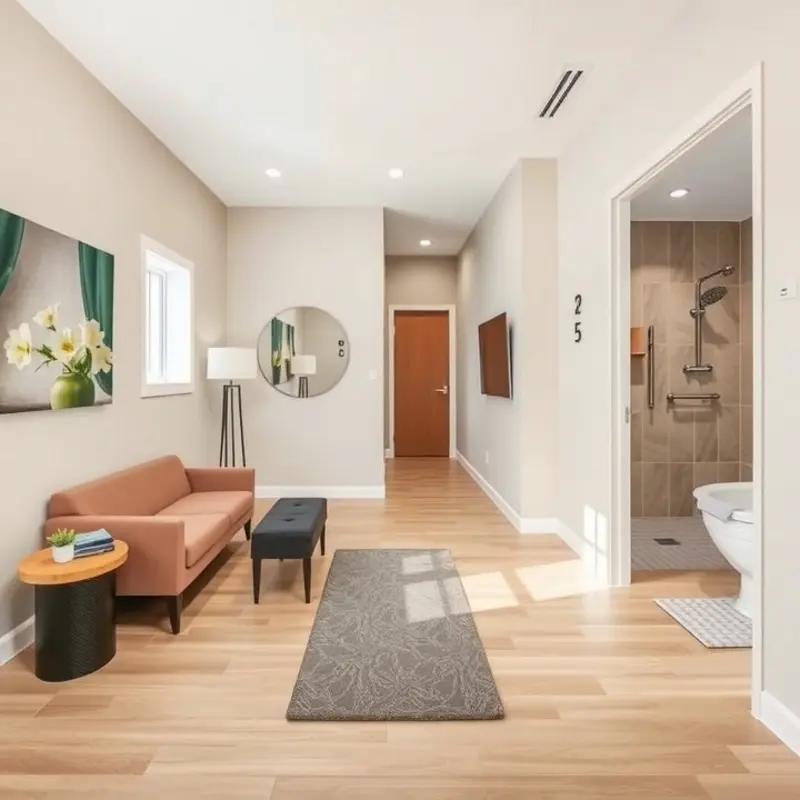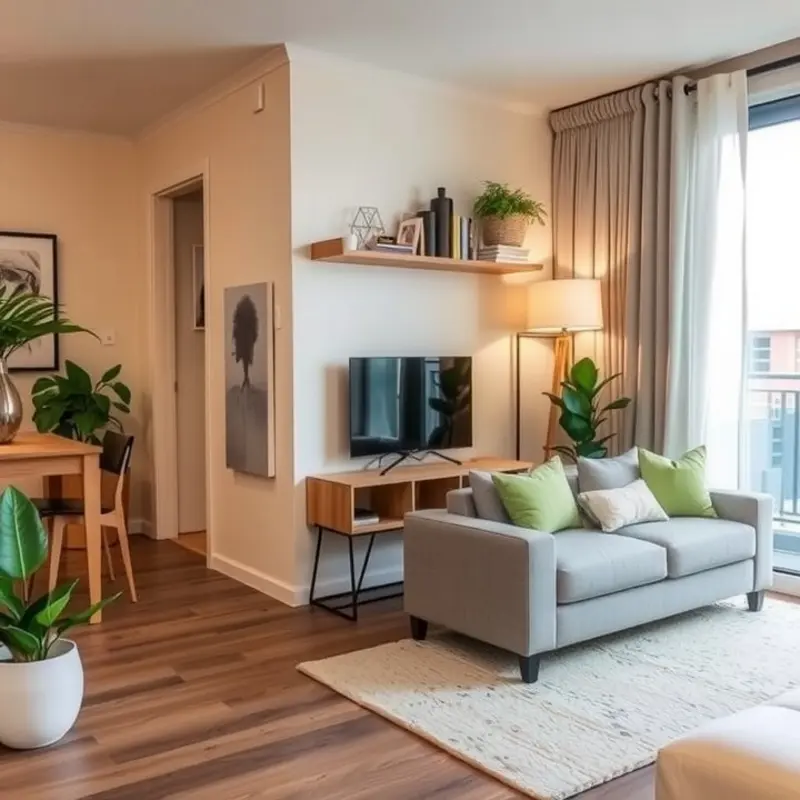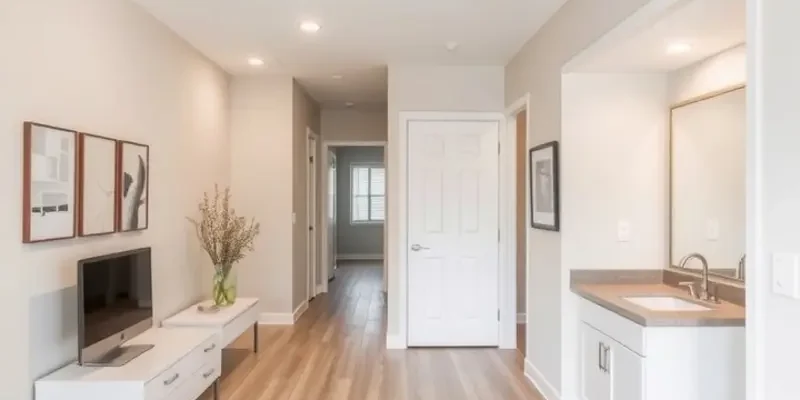Finding a place to live is both exciting and daunting—like trying to assemble IKEA furniture without a manual. For young adults, first-time renters, couples, and families diving into the rental pool, ensuring your new apartment is accessible is crucial. That means more than just figuring out how to squeeze a sectional sofa through a narrow hallway. Accessibility can touch on everything from mobility to ensuring your space is friendly for all guests. Whether you’re navigating the great outdoors or the manicured paths of your stylish apartment complex, having the right knowledge will help you choose a home that suits your lifestyle and needs. So, grab your virtual checklist and let’s explore the dos and don’ts of apartment accessibility, from layout considerations to clever adaptations that make living a delight. Get ready to be both informed and entertained, because understanding accessibility doesn’t have to be boring!
Choosing the Right Floor Plan: More Than Just a Pretty View

The process of selecting an apartment often starts with aesthetics. However, the true hero of accessibility lies in functional design elements that cater to all facets of daily living. As you examine potential floor plans, prioritize spaciousness, door widths, and hallway dimensions. These considerations are crucial for accommodating guests and moving furniture effortlessly.
Opt for open floor plans where spaces transition smoothly without abrupt changes. Such layouts not only enhance social interaction but also facilitate easy navigation, making the apartment feel more inclusive. Be mindful of features like wide doorways, which are indispensable for accommodating mobility aids such as wheelchairs or walkers.
Bathrooms often become a deciding factor when assessing accessibility. Look for layouts with ample space, allowing for maneuverability. Ideally, accessible bathrooms should have reinforced walls for future grab bar installations. Low step-in showers or curbless designs enhance safety and convenience, offering a modern touch to practicality.
Consider the placement of appliances and countertops in the kitchen area. Ensure there’s enough space to navigate without bumping into obstructions. An efficiently designed kitchen allows simultaneous cooking and interaction without crowding. Functionality in these areas goes beyond the aesthetic; it’s about ensuring everyday activities require minimal effort and maximum efficiency.
For units on higher floors, elevators become essential. If your potential apartment complex lacks this feature, an accessible alternative such as a ramp should be in place. These ensure that everyone, regardless of their mobility needs, can enjoy equal access to their home.
Look out for smart storage solutions that can help in keeping spaces organized without feeling cramped. Spacious closets and built-in cabinetry can be a boon, making it easier to store belongings efficiently. This can also reduce clutter, fostering a comfortable environment that promotes well-being.
Additionally, consider the outdoor spaces your apartment may offer. While balconies can be an inviting feature, they must be secure and accessible. Ensure that any barriers or railings are at a suitable height to prevent accidents. For more guidance on safety initiatives like installing balcony safety netting, check out resources here.
Ultimately, selecting the right floor plan involves unraveling how different elements can synergize to create a living space that is more than just visually appealing. It’s about unlocking a home where accessibility is seamlessly integrated into everyday life, allowing you to ride the crest of a comfortable and convenient living experience.
Adapting Your Space: Finding Your Inner DIY Guru

Congratulations on securing that apartment! Now it’s time to inject some personality into your new home. But wait—what about those quirky quirks like high shelves and tricky light switches? Fear not! Embrace the art of adaptation. We’ll explore clever hacks to enhance accessibility, like raising furniture for ease of use, using motion-sensor lights, and ensuring your home is a stress-free sanctuary for guests. Don’t worry; you don’t need to become a home improvement aficionado overnight. A few tweaks can turn a regular apartment into a haven for everyone.
Whether you’re a petite individual or facing mobility challenges, high shelves present a common but manageable obstacle. Before rushing to confront these vertical foes, take a moment to strategize. Consider installing adjustable shelving units that adapt to your needs or utilize step stools that can double as sleek, modern accents in your home. These solutions not only enhance accessibility but also serve as decor elements.
Furniture height can dramatically impact your comfort and accessibility. Elevating couches and chairs can make standing easier, especially for guests with mobility limitations. One practical approach is adding risers to furniture legs, which instantly adds height without the need for new purchases. For a seamless touch, choose risers that blend with your furniture’s color scheme, ensuring they complement rather than clash.
Lighting plays an essential role in making your space inviting. Strategically placing motion-sensor lights at entrances and dark hallways can lead to fewer stumbles and a more welcoming environment. Battery-operated options eliminate the need for complex wiring, offering a DIY solution that’s both tenant-friendly and cost-effective.
Introducing carpets not only adds aesthetic warmth but can also secure slippery surfaces. Consider using skid-resistant tape to fasten rugs and avoid trip hazards. Remember, safety and style are not mutually exclusive, even in rentals.
When it comes to creating a sanctuary for guests, accessibility should blend seamlessly with aesthetics. Simple additions like decorative grab bars in the bathroom or lever-style door handles cater to diverse needs without compromising the look of your space. These thoughtful modifications can significantly improve visitor experiences, ensuring everyone feels at home.
For more inspiration on DIY enhancements, explore ‘DIY Renter-Safe Coat Hooks’, which not only add utility but style to your space, keeping jackets off precious seating during gatherings.
Don’t be intimidated to express your creativity. Every apartment presents unique opportunities for innovation and personalization. As you tweak and refine your living space, remember that the goal is to create an environment where you, along with your guests, can thrive with ease and functionality. A few strategic updates can transform your apartment from just four walls into a true home, accommodating everyone’s needs and tastes.
Final words
Navigating the world of rental apartments can feel like attending a family reunion where you don’t know half the guests—you need strategies to help you through! By prioritizing accessibility (and keeping a sense of humor), you set the stage for a living space that welcomes everyone. Whether you’re a young professional pouring over spreadsheets at midnight or a couple chasing after toddlers, knowing how to choose and adapt your apartment will serve you well. Your first rental experience should be memorable for all the right reasons, not fraught with avoidable hurdles. So go forth, new apartment dweller! Embrace accessibility and create your space into a home that’s as effortless and inviting as your favorite pair of sweatpants.









